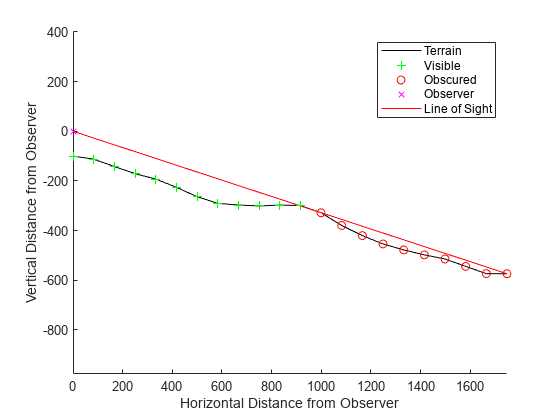los2
Line-of-sight visibility between two points on or above terrain
Syntax
Description
Specify Coordinates and Heights
Specify Reference Sphere
Query Intermediate Points
[
determines line-of-sight visibility for intermediate points between the first and second
points, using any combination of input arguments from the previous syntaxes. For each
intermediate point, the function returns the visibility in
vis,visprofile,dist,h,lattrk,lontrk] = los2(___)visprofile, the distance from the first point in
dist, the height in h, the latitude in
lattrk, and the longitude in lontrk. The
number of intermediate points depends on the resolution of the terrain data.
Display and Interactively Select Coordinates
los2(___) displays the visibility profile between the
two points in a new figure on Cartesian axes. The figure illustrates the terrain, the
observer, the line of sight, the visible points, and the obstructed points.
[___] = los2 enables you to interactively select two
points on the current axesm-based map and then determines whether the
points have line-of-sight visibility, returning any combination of output arguments from
previous syntaxes. If the current object on the map is a surface, then the function uses
the z-coordinate data (the ZData property) as the
terrain elevation data. Otherwise, the function uses z-coordinate data
from the first surface it finds on the map. If the surface does not have
z-coordinate data, then the function uses the color data (the
CData property), instead.

